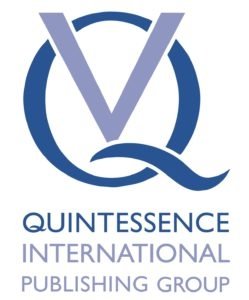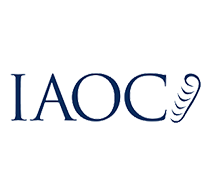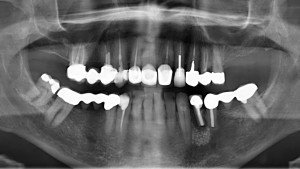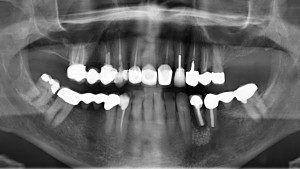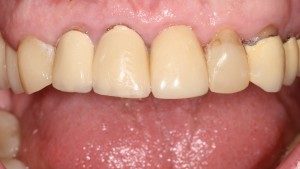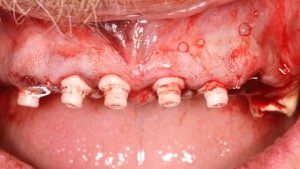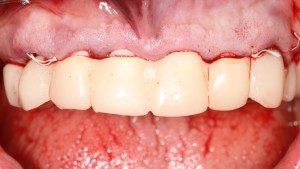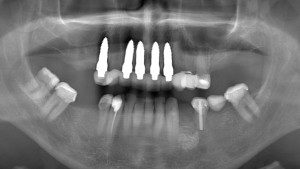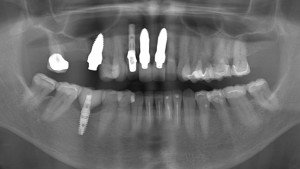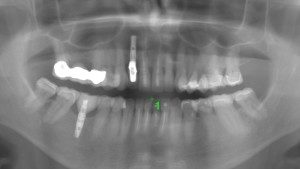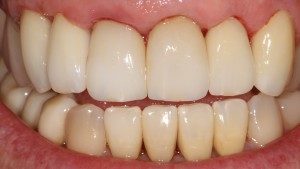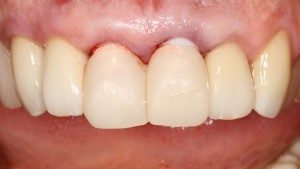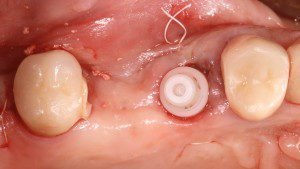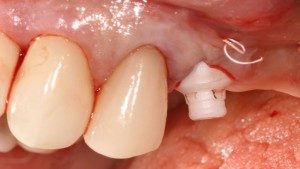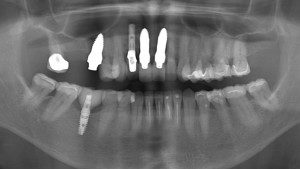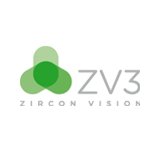A great deal of progress has been made in terms of materials, techniques and design of dental implants since the beginnings of modern implantology over 50 years ago. While titanium and titanium alloys have always been in use, the search for metal-free implantable materials began in the late 1960s and early 1970s, and during the last decade, zirconia has emerged as the most reliable implantable bioceramic. The International Academy of Ceramic Implantology (IAOCI) is an organization entirely dedicated to ceramic and metal-free alternatives to metal implants. It was founded in 2011 by Dr. Sammy Noumbissi, with whom Dental Tribune Online had the opportunity to speak about the mission and vision of the IAOCI, as well as the state of ceramic implantology today.
Dental Tribune Online: Dr. Noumbissi, could you please provide some background information on the development of ceramic implants?
Dr. Sammy Noumbissi: The use of dental implants to replace teeth has increased very rapidly in the last 15 or more years. With this increase in dental implant procedures, the number of manufacturers has increased too. Also, we have witnessed the introduction of various alloys of titanium over time.
Now, just like with any pharmaceutical or medical product, the increase in demand and changes in production methods come with problems and challenges. Although initially anecdotal, reports of titanium and titanium alloy intolerance have increased and are increasingly being investigated and demonstrated in the scientific dental literature. Based on the body of research available today, this intolerance of implant alloys can in great part be attributed to the release of metal ions in the host bone and surrounding tissue as a result of the breakdown and corrosion of metal alloys in the presence of body fluids and the oral environment in particular. Such facts have been established and widely recognized in orthopedics.
In the late 1960s, pioneers in ceramic implantology and notably Professor Sami Sandhaus began the search for modern non-metal implantable ceramic materials. However, many of the early ceramic implants were monocrystalline in their structure and could not survive the demands of the oral environment. Then came the use of polycrystals and in the early 2000s Yttria-stabilized zirconia bioceramic emerged as the material of choice for metal-free intrabony implantation in dental implantology.
How did you become involved in research on ceramic dental implants?
My interest in ceramic implants came about in two ways. First, on a personal level, when I discovered that the metal fillings and implant I had in my own mouth were determined to be the source of some of the health problems I had experienced. Second, on a professional level, where a few of the patients to whom I had provided metal implants returned for check-ups or more implants, and upon reviewing their medical and dental history, it was also determined that the implants were at least in part responsible for the health problems they were experiencing. I then began to actively look for alternatives and at the scientific literature, including case reports in both medical orthopedics and dental implantology. It was clear that bioceramics in the last two decades had established themselves in both medicine and implant dentistry as the most bio-inert implantable material available. In 2011, two colleagues and I decided to create the IAOCI.
What is the primary aim of the IAOCI?
Associations and academies exist around various types of trades and industries. The common purpose of such groups is to organize and create a supportive environment for those involved in the respective area. The IAOCI was created with the same spirit, not only to organize metal-free implantology but also to provide the profession as a whole with quality and high-level continuing implant education on bioceramics as implantable materials. The IAOCI is also a resource for the public seeking practitioners who have experience with ceramic implants.
In your opinion, what are the dangers of metal implants?
Metal and most particularly titanium implants have been very successful. Their use has grown exponentially and with that manufacturers have multiplied, as well as manufacturing protocols. As a result, we have observed a steady increase in the alloy elements mixed with titanium during the manufacturing process. The problems begin when the metal implant highly alloyed or not, once placed is subjected to functional stresses, galvanism, body fluids and the harsh oral environment. The combination of mechanical, chemical and electrical events induces cracks and pitting of the metal, as well as breach in the oxide layer, and the implant undergoes corrosion attack. The corrosion attack, which is essentially an oxidation process, leads to the release of metal ions that studies have shown to be found in the surrounding bone, lymphatics, spleen, liver and in some cases crossing the blood–brain barrier.
What alternatives to metal dental implants are currently available on the market?
Today, the well-researched and proven alternative material to metal for dental implants is zirconium dioxide, also known as zirconia. This is also a well-proven fact in medical orthopedics. Zirconia is the crystal phase of zirconium and as such it is not a metal. There are different manufacturing protocols for zirconia for dental implantation and they all lead to a variety of polycrystal bioceramics, such as zirconia-toughened alumina, hot isostatic-pressed zirconia and Yttria-stabilized zirconia. The common and most important properties of these bioceramics are inertness in the bone and oral environment, structural stability, absence of electrical activity, extremely low plaque retention and superior aesthetics.
Is the success rate of metal-free implants comparable with that of titanium implants?
In the early days, there were challenges. The materials were monocrystalline with very highly polished and glassy surfaces, which made the early implants prone to fracture, poor attachment of bone-forming cells and low bone–implant contact. The manufacturing protocols, design, surface modification techniques and technologies of zirconia implants have evolved to a point where bone integration is ensured and comparable results are obtained.
Are ceramic alternatives the future of dental implantology?
Every industry projection one sees about implants signals good news for the future. Implants are now and will continue to be widely accepted by patients and the profession. Both groups agree that this is state-of-the-art treatment. However, owing to technology, the public is much more informed about health issues and therapies. We are in a similar situation today to that of Invisalign braces a few years back, in that consumers are pushing dentists toward metal-free implantology for the most part. In five years’ time, I believe that the number of ceramic implants being placed will double.
Bio-inert materials are the future of any type of implantable device. I believe bioceramics have taken hold and will be around for a long time because there has been a strong shift toward providing health care with the minimum risk and invasiveness over the last few years, as well as in a way that is more integrated, natural and biological. Furthermore, manufacturers have rapidly evolved and adapted the material and implant designs to clinical needs and demands. We now have a wide variety of implant designs, surface microstructures, components and prosthetic connections, making ceramic implants applicable to an extensive range of tooth replacement situations.
Dentists may have concerns about the reliability of ceramic implants. How does your organization address this?
Even within specialties, there is a need for organized groups because in today’s world research and application of discoveries are moving at lightning speed compared with 20 years ago. Therefore, once one has an environment in which much of the time and energy is spent tracking, learning and sharing innovative techniques and materials, members have a forum where they can obtain the information, training and skills to deliver the best of care to their patients in an evidence-based and organized manner.
As a matter of fact, our membership has doubled in the last two years and when prospective or new members are asked why they want to join or joined the academy, the most common response is that they are seeking a forum where they can obtain structured information and training.
Another frequent reason is that dentists have had patients challenge or inform them on the use and occasionally the existence of ceramic implants. Through technology and the ease of access to information, the public obtains information faster than we busy clinicians.
The IAOCI will be hosting its Fifth Annual Winter Congress in Montego Bay, Jamaica. What can people expect from the event?
The theme in 2016 will be the last decade in ceramic implantology. We will have 14 speakers from seven different countries who will share their experiences with a variety of ceramic implant systems over the last ten years. One of our guest speakers has over 15 years of documented experience with zirconia implants. We will also have workshops on different implant systems, ceramic regenerative products and revolutionary soft-tissue- and hard-tissue-enhancing protocols proven to optimize implant integration and long-term stability.



